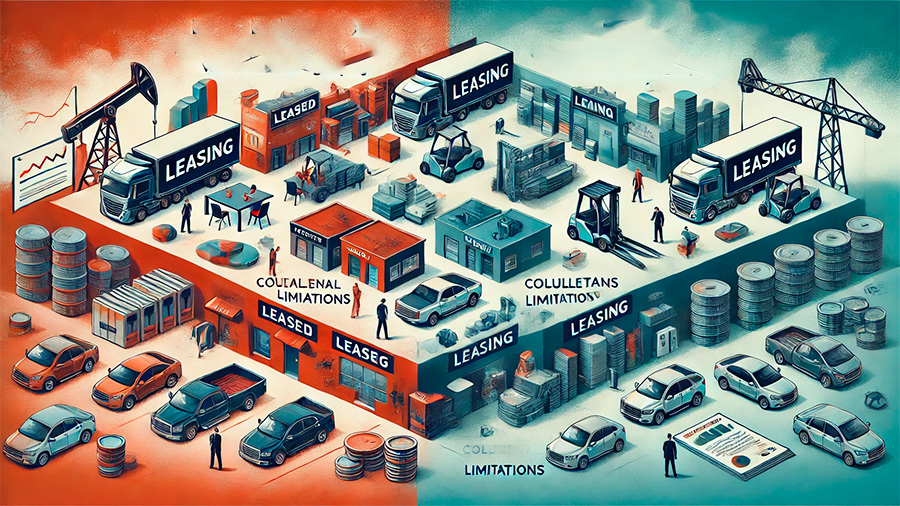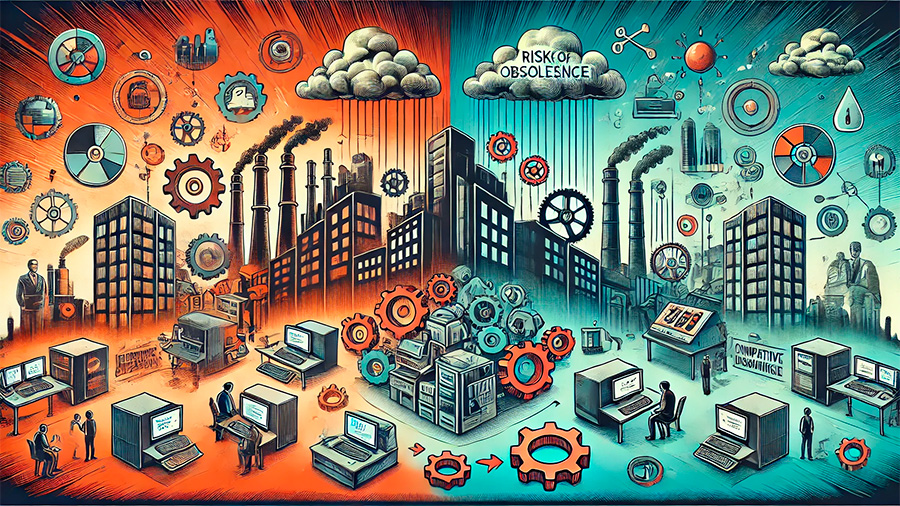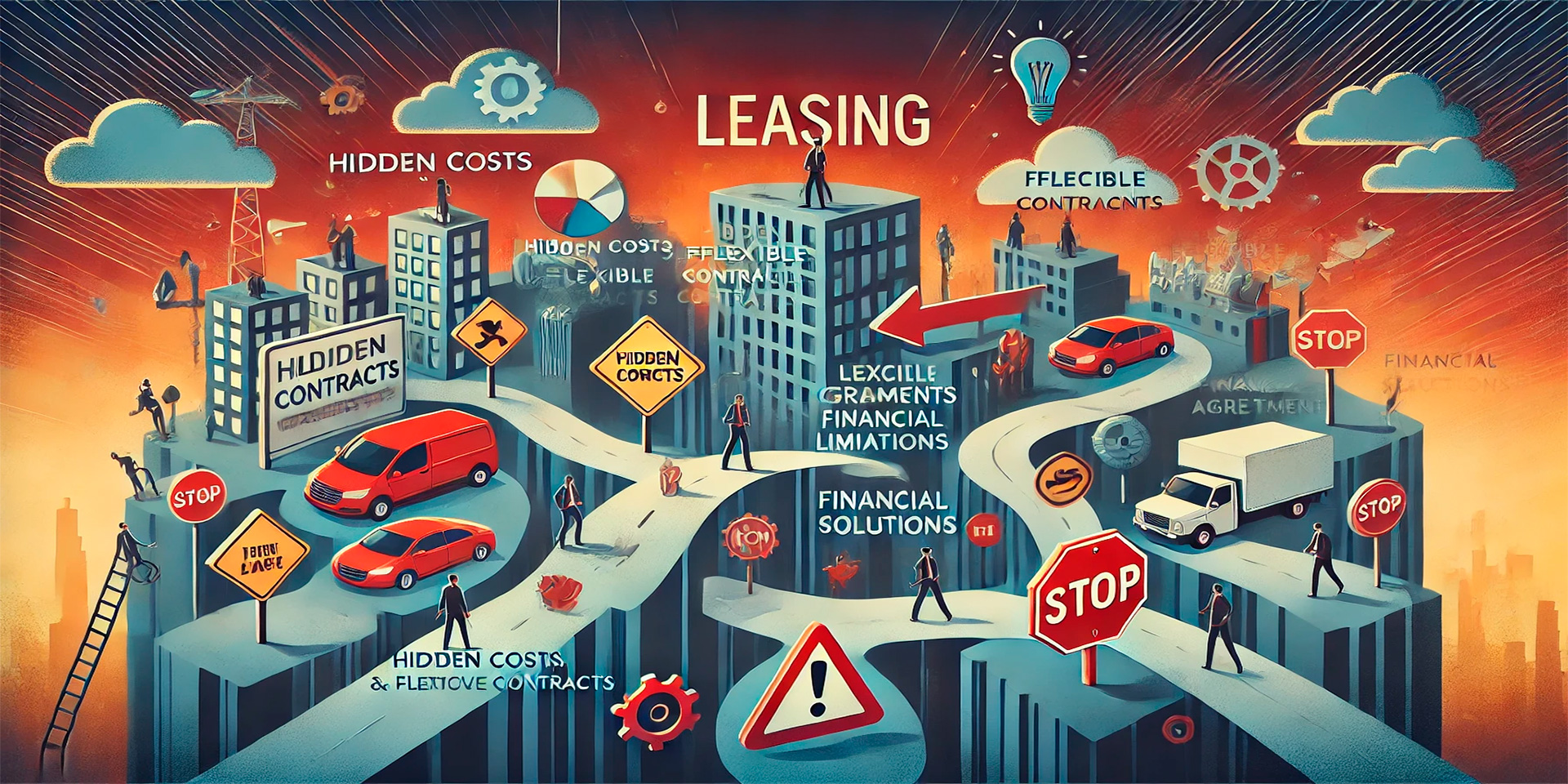Leasing is often seen as an attractive option for businesses seeking flexibility and lower upfront costs compared to purchasing. However, while leasing offers many advantages, it can also present challenges that businesses need to carefully evaluate before entering into agreements. From the risk of higher long-term costs to restrictions on usage, leasing can sometimes create financial and operational hurdles that need to be navigated with caution.
In this article, we explore the potential pitfalls of leasing and offer strategies for businesses to overcome these challenges, ensuring they can make informed decisions that align with their long-term goals.
Higher Long-Term Costs
One of the main challenges businesses face when leasing is the potential for higher long-term costs. While leasing reduces the need for a large upfront investment, the total cost of leasing an asset over several years can exceed the price of purchasing it outright. Businesses that need assets for an extended period may find that the cumulative cost of leasing becomes significantly more expensive than ownership.
For example, a business that leases equipment for five years may end up paying more than if it had financed the purchase at the outset. This is particularly true if the lease is continually renewed without renegotiation. To avoid this, businesses should calculate the total cost of ownership (TCO) versus the total cost of leasing over the expected lifecycle of the asset and consider which option is more financially beneficial.

Lack of Asset Ownership
Leasing provides businesses with access to essential equipment, vehicles, or technology without the financial burden of ownership. However, one of the drawbacks of leasing is that businesses do not build equity in the asset. At the end of the lease term, the business must return the asset to the lessor or renew the lease, often without the option to purchase.
This lack of ownership can limit a business’s financial flexibility. Unlike owned assets, leased equipment cannot be used as collateral for loans, nor can it be sold or repurposed at the end of its useful life. For businesses focused on long-term growth, this can hinder their ability to leverage owned assets to secure additional financing.
Businesses should carefully assess whether the lack of ownership will impact their future financial strategies and consider negotiating lease-to-own options if ownership is important to their long-term goals.
Usage Restrictions and Maintenance Obligations
Leasing agreements often come with strict usage restrictions that can limit how businesses use the leased asset. These restrictions might include mileage limits on vehicles, specific maintenance requirements, or conditions on how equipment can be operated. Violating these terms can result in penalties, which can add to the overall cost of the lease.
For example, a company that leases vehicles may face significant penalties if it exceeds the mileage limit specified in the lease agreement. Similarly, leasing equipment often comes with obligations to maintain the asset according to the lessor’s specifications. Failing to do so can result in additional charges or even termination of the lease.
To mitigate these risks, businesses should thoroughly review the terms of the lease agreement and ensure they can comply with all conditions. Negotiating more flexible terms or opting for leasing agreements with fewer restrictions can help businesses avoid costly penalties.

Risk of Obsolescence
In industries where technology evolves rapidly, leasing can expose businesses to the risk of obsolescence. While leasing allows companies to upgrade to newer models at the end of the lease term, businesses may still be locked into using outdated equipment for the duration of the lease. This can put them at a competitive disadvantage, especially in sectors like IT, manufacturing, or healthcare, where the latest technology is essential for maintaining efficiency and competitiveness.
To overcome this challenge, businesses should opt for shorter lease terms or lease agreements that offer the option to upgrade equipment mid-term. This ensures that they can keep pace with technological advancements and avoid being stuck with obsolete tools or systems.
Complex Lease Terms and Hidden Costs
Leasing agreements can sometimes include complex terms that are difficult to navigate, leading to unexpected costs. Hidden fees, such as early termination penalties, excessive wear and tear charges, or end-of-lease cleaning fees, can significantly increase the cost of leasing. Businesses that do not fully understand the lease agreement may find themselves facing unanticipated expenses when the lease term ends.
For instance, a business leasing office space may face high costs for restoring the property to its original condition if this is required by the lease. Similarly, equipment leases may include hidden charges for exceeding usage limits or failing to return the asset in optimal condition.
To avoid these pitfalls, businesses should thoroughly review all lease terms before signing and ask the lessor to clarify any ambiguous clauses. Working with legal or financial experts to review leasing agreements can help businesses identify and address hidden costs before they become a problem.
Limited Flexibility in Changing Business Needs
Leasing can provide flexibility in the short term, but long-term leases can restrict a business’s ability to adapt to changing needs. If a business’s operational requirements change during the lease term—such as a shift in market demand, new growth opportunities, or the need to downsize—it may find itself locked into a lease that no longer suits its situation.
For example, a retail company that leases additional warehouse space may find that it no longer needs the extra capacity if demand declines. Breaking a lease early, however, often comes with hefty penalties, leaving the business with an asset it cannot fully utilize or an expensive exit cost.
To address this challenge, businesses should negotiate flexible lease terms that allow for early termination or modification of the lease if their needs change. Including renewal options or the ability to scale the lease up or down based on business performance can help ensure the lease remains beneficial throughout its duration.
Conclusion
While leasing can offer numerous benefits, it also presents challenges that businesses must consider before entering into agreements. From higher long-term costs and lack of ownership to usage restrictions and the risk of obsolescence, leasing can create financial and operational hurdles if not carefully managed. By understanding these potential pitfalls and taking steps to mitigate them, businesses can make informed leasing decisions that support their long-term goals and financial health.


